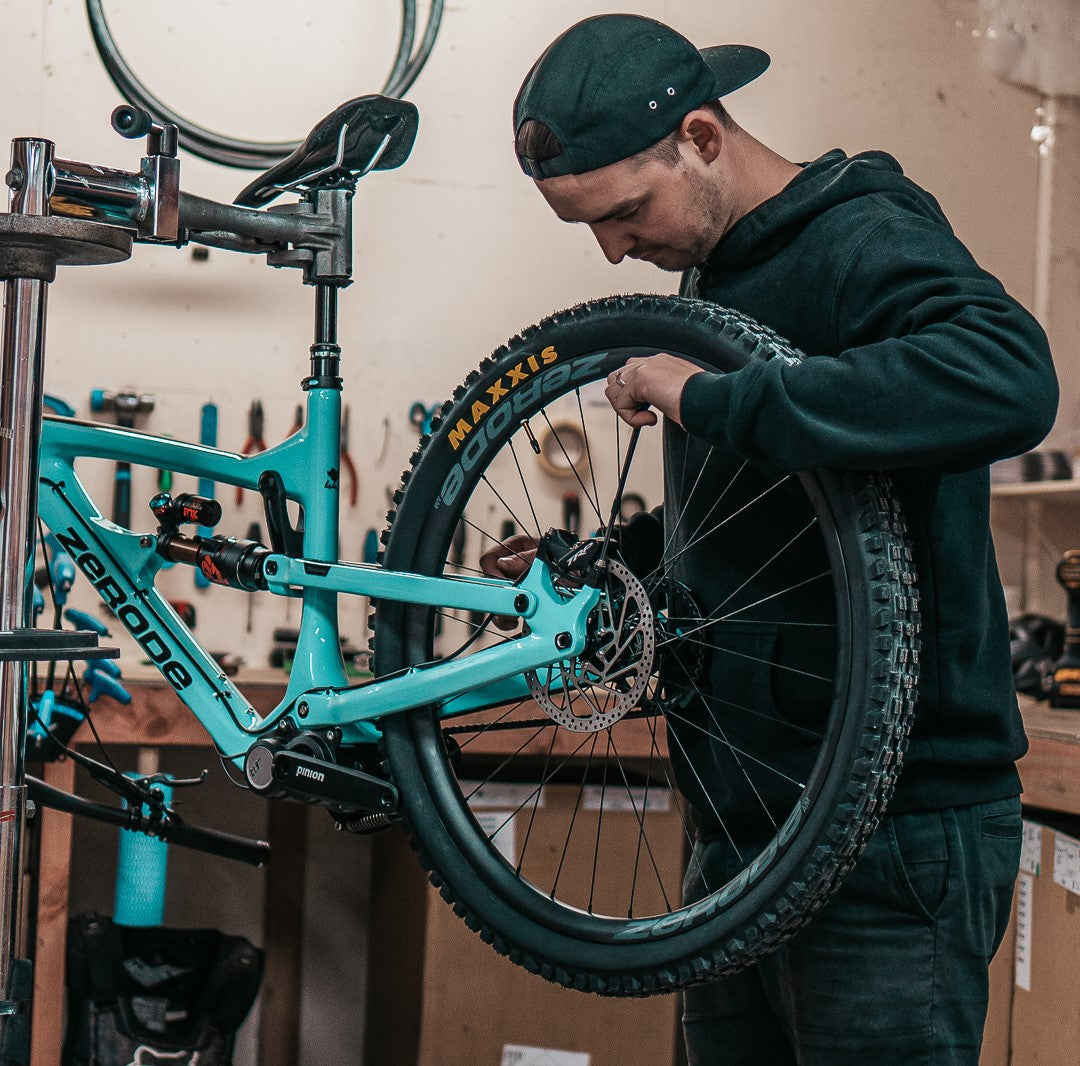revolutionising riding
The revolutionary use and placement of a gearbox at the heart of our frames allows us to revisit the key concepts of suspension design, such as optimised wheel path, sprung to un-sprung ratios and mass centralisation. Concepts long ago discarded by the bike industry because of the limitations of the drive train we all know and hate. Whether you are a privateer pushing hard to compete at the World Series or a weekend warrior after the best suspension available the Zerode Taniwha or Katipo is for you.
The Pinion C.Line gearbox offers a huge spread of gears that goes well beyond today's 1x12. Whether you are grinding up an epic backcountry single track or blasting down a high speed fire-road there is a gear to do the job. And every gear is accessed with optimal chain line, and no 'outside interference' from things like mud, twigs, leaves and all the other usual trail debris that gets ground into your gears during the course of a ride. An unexpected pinch climb will never be a problem again, changing gear is effortless and immediate.

A significant reduction in unsprung weight ensures suspension performance that is undeniably better than any mountain bike equipped with a rear derailleur. Symmetrical spoke angle ensures a very strong, light rear wheel that further improves suspension performance.
A simple, effective and proven suspension platform combined with a fixed chain line optimizes pedaling performance through the entire travel range. It is difficult to approach the elegance and performance of this layout with any virtual pivot design. A sleek full carbon frame offers excellent stiffness, reduced weight and flawless beauty with modern geometry.

Zerode tech faq
In a nut shell, we don't like them. The pedalling performance of a Zerode is second to none. The "real" pivot design combined with a fixed chain line means it is possible to achieve very stable pedalling through the entire range of suspension travel while independently controlling the suspension rate via a link. With a Horst link or VVP design the virtual pivot races all over the show making it hard to control suspension rate and pedalling independently. You get a compromised design despite what the bike industry's marketing departments tell you.

There is a huge amount of misinformation online about brake effect. The story goes, "single pivot designs suffer from brake jack or brake lock out". In reality all bikes, even bikes equipped with Horst links have brake effect to some degree. What happens is the traction force at the rear tire tends to rotate the suspension about the pivot, whether real or virtual, causing a suspension compression. It's worth noting the traction force at the rear wheel is usually small and so is the compressive effect and that the suspension is still free to respond to other inputs. Some bikes have more compression than others, in some situations this compression helps performance, in other situations it hinders performance.

Imagine a 10-60 cassette. Enough said.

Obviously there is an extra element in the drive train so there has to be losses. The loss is small and depends on load and gear. A comparison with a clean mech with a chain in the middle of the cassette would obviously have a standard mech come out on top. If you take into account a significant reduction in unsprung weight, changing gears instantaneously and the fact the standard rear mech drive trains efficiency falls off quickly when the chain is at the top or bottom on the cassette or when sprockets are small, then add a little bit of dirt or mud the Pinion becomes very attractive. We wouldn't use one on a road bike but on a 160mm trail/enduro bike for riding proper mountain bike trails it is a no brainer.

If you add the new Pinion C.Line gearbox, and take away a cassette (unsprung weight), derailleur (unsprung weight), chain guide and build a lighter stronger rear wheel the weight 'disadvantage' of the gearbox is ~500g (the weight of a bottle of water). Given that you have to power yourself and the bike up hills and overcome rolling and air resistance the extra effort required when climbing is almost not measureable. Even if it was we would happily take that compromise if the reward was a significant improvement in suspension performance, 600% gear range, stronger rear wheel, almost no maintenance, chains that last years, shifting without pedalling, instantaneous shifting, no chain slap, optimised pedalling etc etc. We'd be very surprised if Zerode owners ever go back to a bike with a derailleur.




